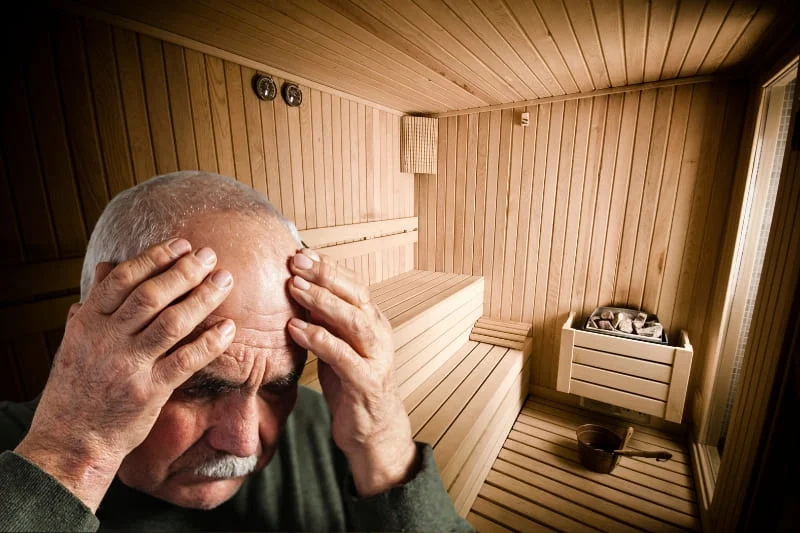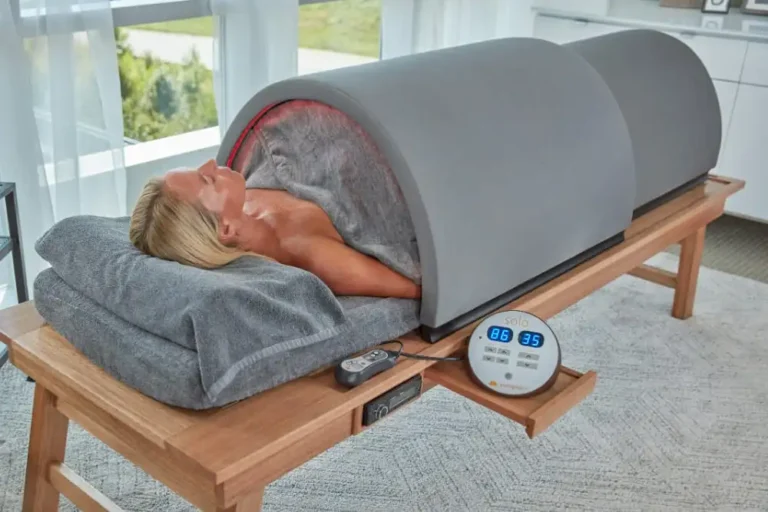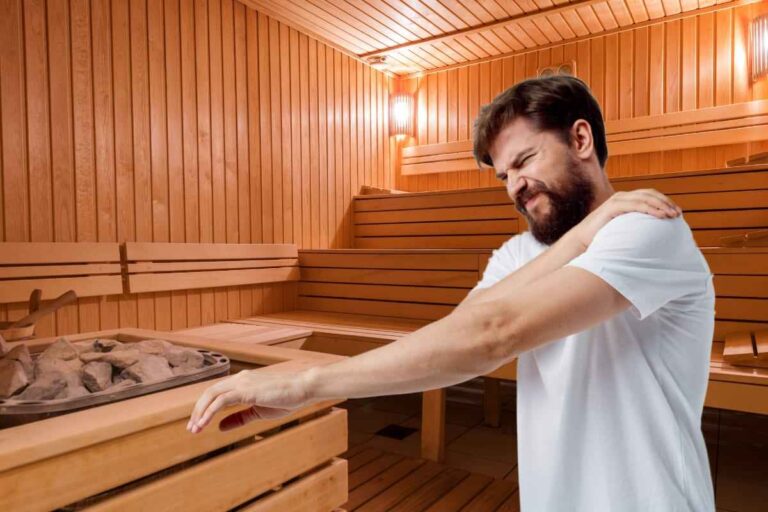Sauna and Alzheimer’s: Can Heat Therapy Reduce Your Risk?

The connection between sauna and Alzheimer’s prevention has caught the attention of researchers worldwide.
In this guide, you’ll discover how saunas protect against Alzheimer’s, explore which type of sauna offers the best brain-protective benefits, and learn practical ways to incorporate this promising prevention strategy into your routine.
We’ll break down the science into clear steps you can follow, backed by the latest research.
Table of Contents
DISCLAIMER: The information provided in this article is for educational purposes only and is not intended as medical advice. Always consult with a qualified healthcare professional before starting any new health regimen, including the use of saunas.
The Science Behind Sauna and Alzheimer’s
Research indicates a potential link between regular sauna use and a reduced risk of dementia and Alzheimer’s disease1.
A study conducted at the University of Eastern Finland, which followed 2,315 men aged 42 to 60 for 20 years, revealed that those who used a sauna 4 to 7 times a week were 66% less likely to develop dementia and 65% less likely to develop Alzheimer’s compared to those who used a sauna only once a week2.
This association remained even after accounting for factors like age, blood pressure, alcohol consumption, and smoking. There are several factors which contribute to this:
- Improved Circulation: Sauna sessions can improve circulation, ensuring an adequate supply of oxygen and nutrients to the brain, which is vital for maintaining brain health and reducing cognitive decline.
- Heat Shock Proteins: Exposure to high temperatures in saunas induces heat stress, potentially stimulating the production of heat shock proteins (HSPs).
- Reduction of Plaques and Tangles: Infrared sauna therapy may decrease the accumulation of plaques and tangles in the brain, which are associated with Alzheimer’s disease3.
- Neurogenesis: Infrared saunas may promote neurogenesis, the production of new brain cells.
- Inflammation: Studies show that regular sauna use reduces inflammation throughout your body, including your brain4. Lower inflammation means better brain health over time.
Traditional vs Infrared Saunas: A Brain Health Comparison
When choosing a sauna for brain health, you have two main options: traditional Finnish saunas and infrared models. Each has unique benefits for your brain.
Traditional Finnish saunas operate at higher temperatures (150-195°F) and heat the air around you. This type showed an impressive 65% reduction in Alzheimer’s risk in Finnish studies [Laukkanen, Tanjaniina, et al. (2017)]. The high heat creates a more intense experience, triggering stronger protective responses in your brain.
Infrared saunas work differently. They use lower temperatures (120-150°F) but heat your body directly. While we have fewer studies on their brain benefits, they offer some advantages. You can stay in longer, and many people find them more comfortable. They’re also more energy-efficient and often cost less to install and run.
Maximizing Benefits: Exercise and Sauna Integration
Want to boost your brain benefits even more? Combine your sauna sessions with exercise. Research shows this combination packs a powerful punch for brain health.
The best approach? Exercise first, then sauna. Wait about 10 minutes after your workout before entering the sauna. This timing helps your body recover while maximizing the brain-protective effects. Keep your sauna session between 15-20 minutes.
Studies found that this combination improves blood flow to the brain better than either activity alone5. It also increases the production of proteins that protect brain cells. Think of it as a one-two punch: exercise strengthens your brain, and the sauna helps it recover and protect itself.
Start slowly. Try this combo twice a week at first, then build up to 3-4 times weekly as your body adapts.

Evidence-Based Protocol Guide
Here’s your step-by-step guide to getting the most brain-protective benefits from sauna use. Research shows specific temperatures and times work best.
For traditional saunas, aim for 176-212°F (80-99°C). Studies found this range provides the best protection against dementia. Avoid temperatures above 212°F (100°C), as they might increase health risks6. Start with 5-10 minute sessions, gradually building to 15-20 minutes.
For infrared saunas, the sweet spot is 120-150°F (49-65°C). You can safely stay in longer, typically 20-30 minutes, because of the lower temperatures.
Which Sauna Is Right For You?
- Choose traditional if you:
- Can tolerate high heat well
- Want the strongest research-backed benefits
- Have no heart or blood pressure issues
- Choose infrared if you:
- Are sensitive to intense heat
- Have joint problems or arthritis
- Prefer longer, gentler sessions
- Want lower operating costs
Safety and Getting Started
Before starting your sauna routine, check with your doctor, especially if you have heart problems or low blood pressure. Certain medications might also affect how your body handles heat.
Start slowly and listen to your body. Begin with one weekly session, then gradually increase to 3-4 times per week. Always stay hydrated by drinking water before and after each session.
Track your progress in a simple log: note duration, temperature, and how you feel afterward. This helps you find your ideal routine. Many people report feeling sharper and more energetic after a few weeks of regular use.
Conclusion
Ready to protect your brain from Alzheimer’s? Start your sauna journey with one 10-minute session per week. As you build comfort, work up to 3-4 weekly sessions. Remember, consistency matters more than intensity.
Whether you choose traditional or infrared, making sauna sessions part of your routine could be a powerful step in safeguarding your cognitive health.
Scientific Studies / Resources
- https://www.dementia.org.au/sites/default/files/2024-05/ResearchSheet-DrRossanaRosaPorto-2023.pdf ↩︎
- Laukkanen, T., Kunutsor, S., Kauhanen, J., & Laukkanen, J. A. (2017). Sauna bathing is inversely associated with dementia and Alzheimer’s disease in middle-aged Finnish men. Age and ageing, 46(2), 245–249. https://doi.org/10.1093/ageing/afw212 ↩︎
- https://pure-medical.co.uk/infra-red-sauna-therapy/infrared-sauna-for-alzheimers ↩︎
- Laukkanen, J. A., & Laukkanen, T. (2018). Sauna bathing and systemic inflammation. European journal of epidemiology, 33(3), 351–353. https://doi.org/10.1007/s10654-017-0335-y ↩︎
- Gibbons, T. D., Ainslie, P. N., Thomas, K. N., Wilson, L. C., Akerman, A. P., Donnelly, J., Campbell, H. A., & Cotter, J. D. (2021). Influence of the mode of heating on cerebral blood flow, non-invasive intracranial pressure and thermal tolerance in humans. The Journal of physiology, 599(7), 1977–1996. https://doi.org/10.1113/JP280970 ↩︎
- Podstawski, R., Borysławski, K., Józefacka, N. M., Snarska, J., Hinca, B., Biernat, E., & Podstawska, A. (2024). The influence of extreme thermal stress on the physiological and psychological characteristics of young women who sporadically use the sauna: Practical implications for the safe use of the sauna. Frontiers in Public Health, 11, Article 1303804. https://doi.org/10.3389/fpubh.2023.1303804 ↩︎

“Become a Sauna Expert Overnight!”
Grab Your “FREE” Sauna E-book NOW!
Get your hands on the ultimate sauna manual. From history to DIY setups, our free guide has it all.

As a Chartered Accountant turned sauna enthusiast, I bring a unique blend of analytical skills and hands-on experience to the world of heat therapy. With over a decade dedicated to researching and testing sauna products and practices, I’ve developed a deep understanding of this field. A the founder of HomeInDepth.com, I provide reliable, easy-to-understand information on all aspects of saunas. My goal is to guide you through every step of your sauna journey, offering meticulously researched, unbiased advice to help you make informed decisions and create your perfect sauna experience. I’m always happy to hear from sauna lovers like you—feel free to leave questions or share your own tips in the comments below so we can learn together. Contact me on:







One Comment